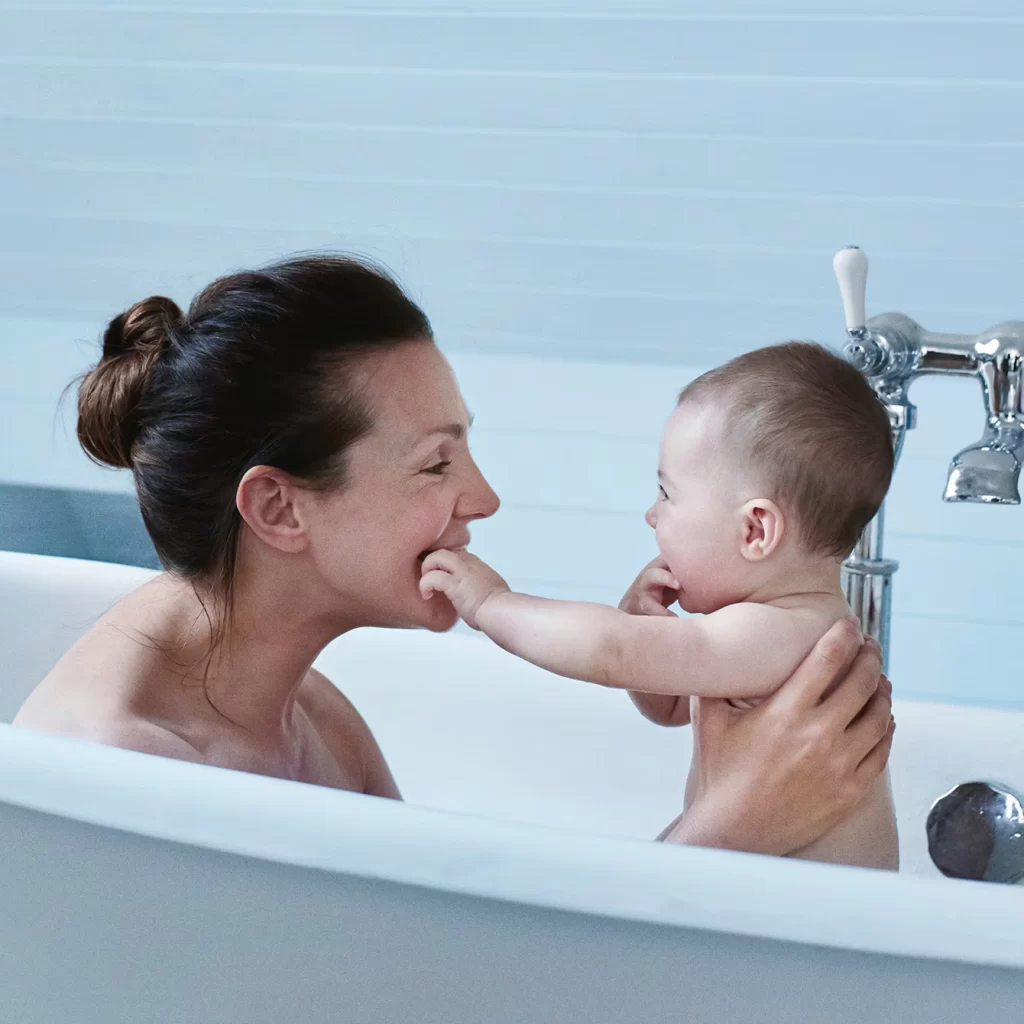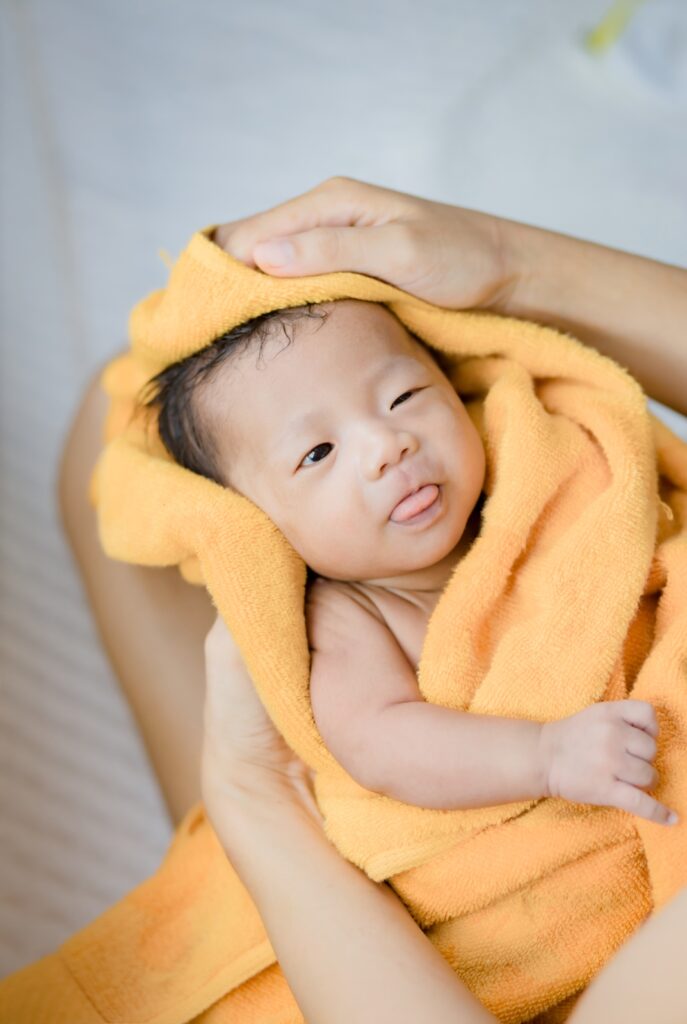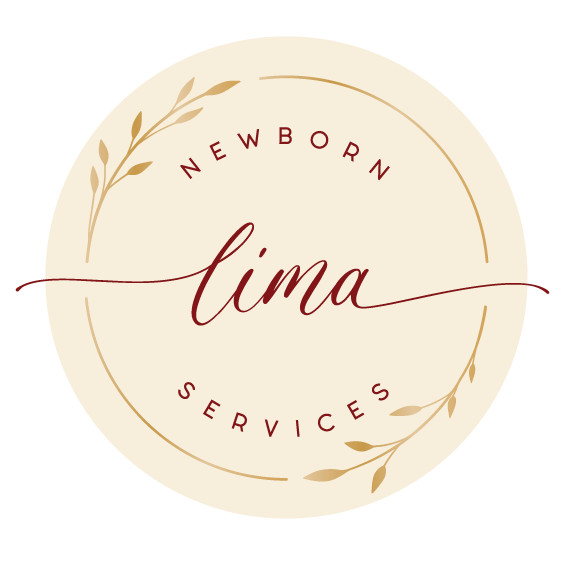
07 Oct Baby’s First Bath: A Special Moment at Home
As parents, every first with your newborn is a precious memory—especially their first bath. It’s a time filled with love and care, offering a bonding experience that can last a lifetime. However, there are a few important details to keep in mind before your little one is ready for that first bath.

Understanding Vernix: A Natural Protector
When your baby is born, their skin may be covered in a creamy, cheese-like substance called vernix caseosa. This natural coating is far more than just a protective layer. According to the American Academy of Pediatrics (AAP), vernix is rich in beneficial bacteria that help strengthen your baby’s developing immune system. It acts as a shield, offering protection against infections in those critical early days. For this reason, it’s advisable to delay your baby’s first bath for at least the first 24 hours after birth, even if hospital staff suggest doing it shortly after birth.
Why Delay the First Bath?
While hospital nurses may offer to bathe your baby, waiting until you’re home can provide a more comforting and personal experience for both you and your newborn. In the warmth of your home, free from the rush and stress of the hospital, you can turn this first bath into a calm, intimate moment.
Before You Submerge Your Baby…
The AAP recommends holding off on full, submerged baths until the umbilical cord has fallen off completely—typically after one to two weeks. Until then, stick to sponge baths, gently cleaning your baby with a soft cloth and water. This keeps their skin clean while allowing the umbilical stump to heal. Once the cord has fallen off, your baby will be ready for their first immersive bath.
Soap: When and How to Use It
For a newborn’s early baths, simplicity is key. Soap is not necessary for those first few cleanses. Your baby’s skin is delicate, and using just water and a soft cloth is usually enough. Introducing soap too early may strip away the natural oils and vernix that protect their skin.
If you do choose to use soap later on, the AAP suggests opting for a gentle, fragrance-free baby soap to avoid irritation. Use it sparingly and make sure to rinse thoroughly to keep your baby’s skin soft and healthy.
1. Keep the Bath Short
Newborns don’t need a long bath, as they can’t regulate their body temperature like adults. A bath that lasts just a few minutes is enough to clean your baby while keeping them warm and comfortable. When bathing your newborn, it’s a good idea to clean their body first and leave the head for last. Babies lose heat quickly through their heads, so by washing the body first, you help them retain warmth throughout the bath. This approach also makes it easier to keep your baby calm and comfortable during the process.
To prevent your baby from getting cold after the bath, try warming a towel in the dryer beforehand. Wrapping your baby in a soft, warm towel immediately after the bath helps maintain their body temperature, offering them comfort and a sense of security.

2. Use Warm, Comfortable Water
Ensure the water is warm but not too hot, ideally between 98–100°F (37–38°C). Always test the water temperature with your wrist or elbow to make sure it feels comfortably warm for your baby.
3. Stay Calm and Reassuring
Babies are sensitive to their parents’ emotions. Staying calm, speaking in a gentle voice, and using soft, reassuring touch can help your baby feel relaxed and at ease during their bath.
At Lima Newborn Services, I encourage families to take their time with this experience, allowing for a gentle introduction to bath time in the comfort of your own home. It’s more than just cleanliness—it’s about nurturing and bonding with your new baby in a way that supports their health, well-being, and emotional connection.

Dayane Lima
Newborn Care Specialist & Full Spectrum Doula - Lima Newborn Services LLC
Dayane Lima is the founder and CEO of Lima Newborn Services LLC. She is dedicated to providing comprehensive support and education for families during pregnancy and early parenting.

 EN
EN  PT
PT
No Comments